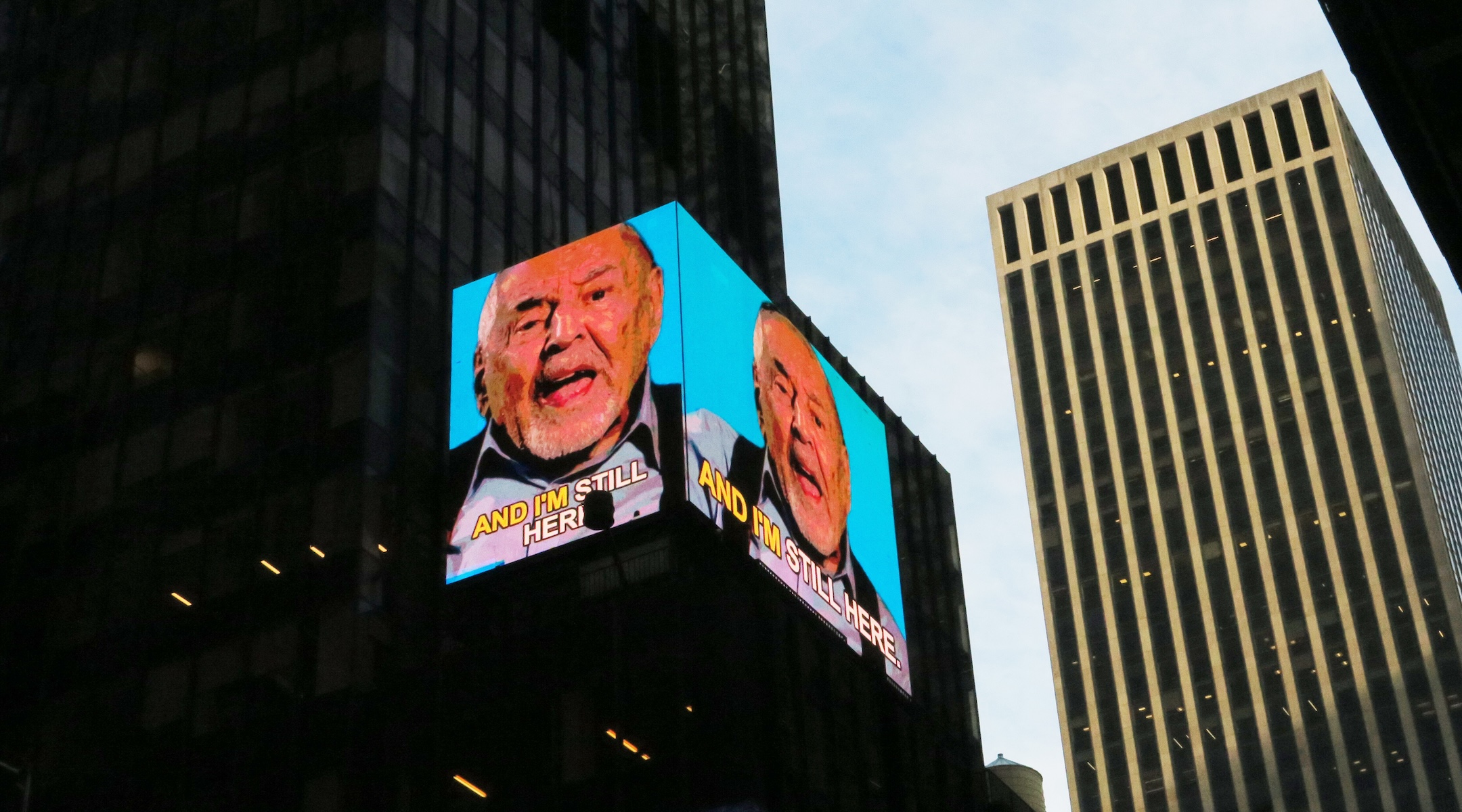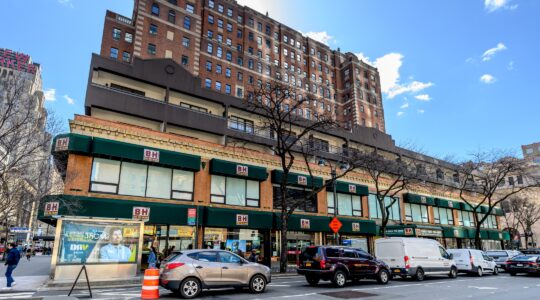In 1944, the year Judith Frydman turned 1, Nazi troops invaded her hometown of Budapest, Hungary. Her father, who survived, was sent to a forced labor camp while Frydman, her mother and her grandmother were forced to live in the city’s Jewish ghetto, sharing a mattress in the corner of a cramped room.
“Don’t cry, don’t talk loud,” Frydman’s mother would always tell her.
Frydman survived, along with her mother, and she moved first to Argentina and then to Israel. She settled in New York, where she has lived in the same Brighton Beach apartment for 57 years.
Now, Frydman is one of 12 local Holocaust survivors currently featured on a Times Square billboard in honor of International Holocaust Remembrance Day on Monday, which will mark 80 years since the liberation of Auschwitz. A project of the Jewish Community Council of Greater Coney Island — a social services organization and community center in southern Brooklyn that works extensively with Holocaust survivors — the billboard aims to highlight survivors’ experiences and legacies, and to remind New Yorkers that as the number of living survivors dwindles, Frydman and others are still here.
According to Zehava Birman Wallace, a case management supervisor for Holocaust Survivor Support Services at the Coney Island JCC, when she describes her job the first question many people ask is, “Oh, there are still Holocaust survivors alive?”
But now, thanks to space donated by the billboard’s owner, who wishes to remain anonymous, a dozen of their faces will be visible in one of the world’s busiest areas.
Raising awareness, according to Birman Wallace, is the first step in raising money to help New York’s population of Holocaust survivors. According to a report last January from the Claims Conference, approximately 14,700 survivors live in New York State — the vast majority of them in Brooklyn — and, as the population ages (the median age last year was 86), the level and cost of the care they need is increasing.
“A significant amount of them are living in low-income situations, and in need, and are in their twilight years, where they need a significant amount of support,” she said. More than half of the survivors in NYC are living at or below the poverty line, according to the Coney Island JCC.
The campaign first lit up the billboard at the corner of West 43rd Street and Broadway in mid-December, and will run through March 15. The video features a short and powerful 10-second message, playing four times an hour, and features a different Holocaust survivor each week.
“Hi, can you see me?” subtitles read as Frydman, whose story will be spotlighted next week, speaks to Times Square’s hundreds of thousands of pedestrians. The video continues: “My name is Judith, I am 82 years old. I am a Holocaust survivor and I am still here.”
Other participants include 87-year-old Marat Rivkin, whose ad played as nearly a million people gathered in Times Square to watch the ball drop on New Year’s Eve, and Brooklynite Alfred Lock, a 102-year-old from Austria who first escaped to Budapest. Once the Nazis invaded Hungary, Lock managed to get on the controversial Kasztner train, which smuggled Jews to safety in Switzerland — the train was diverted to Bergen-Belsen, however, and Lock survived the next few months there before the camp’s liberation.
In a Zoom interview with the New York Jewish Week, Frydman said she was excited to be part of the billboard project, and emphasized its importance. “We are less and less,” she said about her fellow survivors. “There is so much antisemitism, so much against Jews, against Israel, constantly. So yes, it has to be talked about, or pushed to the conscious[ness] of people.”
Frydman also expressed enthusiasm over her brush with fame. “My family is excited about me, and everyone will want my autograph,” she said, laughing. “Somebody said, ‘Oh, all the guys will be standing outside wanting to be with you.’ And I said ‘No, because on the billboard, all my wrinkles are about three feet long, or 10 feet long, so nobody will want to run after me.’”
“But it’s very exciting,” she added, “and I can’t even imagine being up there.”
Birman Wallace said that the spotlight on Frydman and the 11 other survivors on the billboard is more than deserved. “Those stories deserve to be out there,” she said. “Their faces deserve to be out there in the world, and a billboard in Times Square is really just a step, you know, a piece of that puzzle.”
According to Birman Wallace, the company that owns the billboard reached out with the idea of doing an ad after the Coney Island JCC caught their attention in November with an event providing free hearing aids to Holocaust survivors, in partnership with the Miracle-Ear Foundation and the Auschwitz Jewish Center Foundation.“They felt really strongly about the work that we do,” Birman Wallace said, adding that the company offered the JCC the space at a “significantly discounted” rate. The remaining cost was covered by a corporate sponsor, Key to Life Homecare.
The Jewish Community Council of Greater Coney Island provides extensive services for thousands of Holocaust survivors in Brooklyn — there are approximately 10,000 in the borough — including home care, transportation to programming and medical appointments, financial assistance, home-delivered meals, and a festive monthly party known as Club 2600.
Now, the organization is providing its Holocaust survivor clients with a brand-new experience: a chance to help light up the NYC skyline.
“It’s an incredible place to be,” Frydman said.
The New York Jewish Week brings you the stories behind the headlines, keeping you connected to Jewish life in New York. Help sustain the reporting you trust by donating today.





